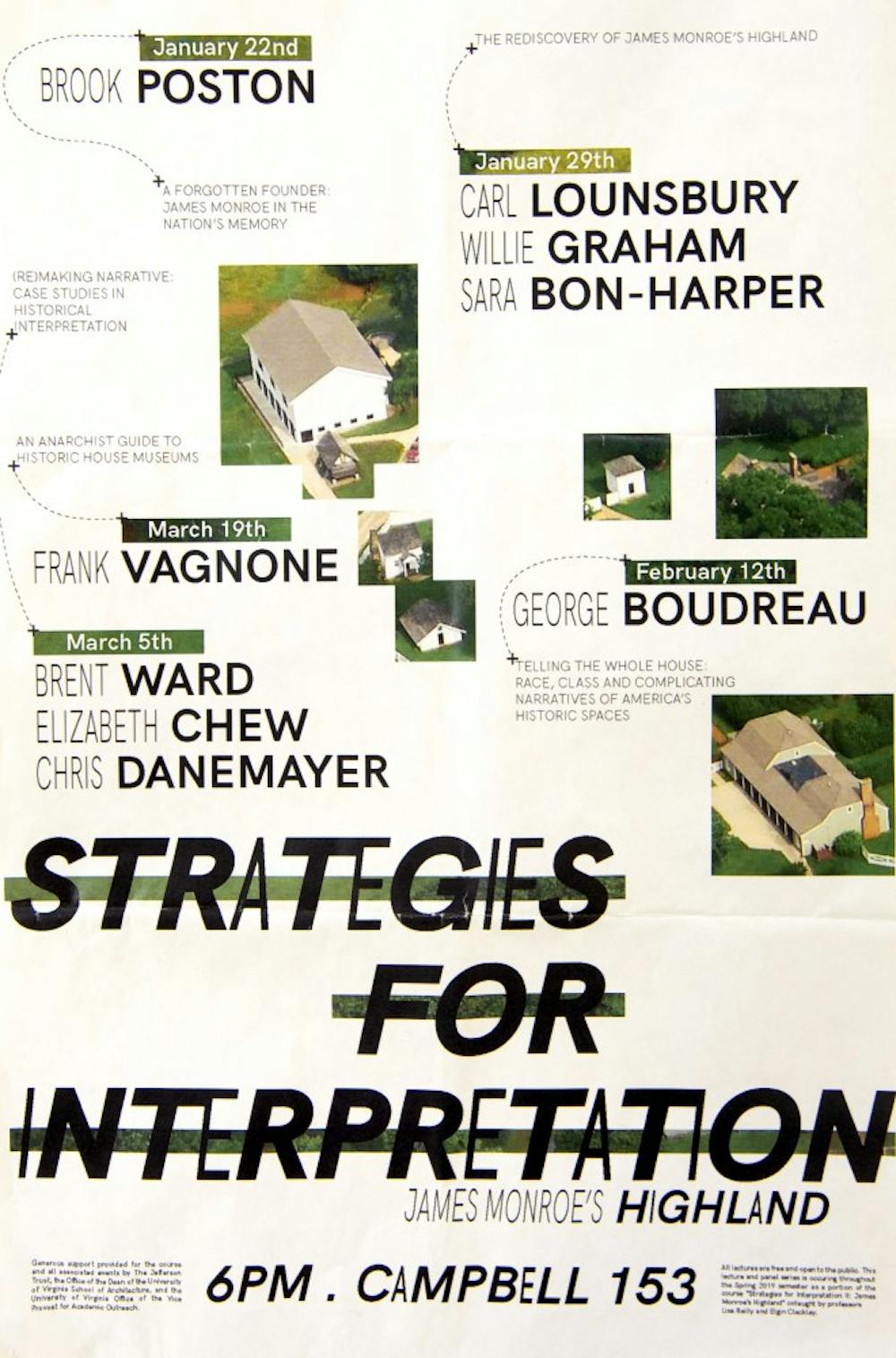Cultural historian and research associate George Boudreau presented a lecture entitled “Telling the Whole House: Race, Class and Complicating Narratives of America’s Historic Spaces” at the School of Architecture Tuesday evening. The title refers to recent efforts by historic sites to integrate untold narratives, particularly of enslaved laborers, in order to capture a fuller interpretation of the sites’ past.
Throughout his talk, Boudreau drew upon regional examples of such dynamics in early American architectural sites, such as Thomas Jefferson’s Monticello, James Madison’s Montpelier and James Monroe’s Highland. Boudreau noted that all of these sites are taking the initiative to incorporate more accurate and representative stories of their history into their interpretations.
“Great interpretation introduces the visitor into the lives of the people who lived and worked in the site,” Boudreau said to the audience. “It is immediate, intimate, a revelation.”
Boudreau is also a senior research associate at the McNeil Center for Early American History at the University of Pennsylvania, and he has worked as a research fellow at Monticello’s Robert H. Smith International Center for Jefferson Studies, which promotes research into the history of Thomas Jefferson and the Monticello community.
In June 2018, Monticello opened an exhibit telling the stories on Sally Hemings, one of Jefferson’s domestic slaves and the mother of multiple children with Jefferson. The exhibit pieces together what is known about Hemings’ life, as well as exploring questions of sexual assault in the enslaved population.
However, Boudreau noted that the complexity of the many stories within a historical site is not always fully realized by visitors.
“Sites need to tell the whole house,” Boudreau said. “We’ve made progress … but how many continue the tour into the cellars of Monticello? What’s the percentage? How many are going on with that story? I think we are still making strides toward telling the whole story.”
The talk was organized by Lisa Reilly, associate professor and undergraduate program director of architectural history, and Elgin Cleckley, assistant professor of architecture and design thinking, as an installation in their “Strategies for Interpretation II: James Monroe’s Highland” series. The collection of lectures and panels corresponds with an architectural history course under the same title, which is being co-taught by Reilly and Cleckley this semester. Sara Bon-Harper, executive director of Madison’s Highland, also contributes to the course.
“We wanted to provide the students with information from outside experts about ways to think about Monroe, ways to think about design, ways to think about themes like representing race and class in a more social history narrative,” Reilly said.
Cleckley said that this practice of reimagining and reinterpreting the narratives within a site has transformed how visitors view the University.
“You can really see this design thinking is happening all over, including the Lawn,” Cleckley said. “You can go and get an African American walking tour. There’s exhibits in the Rotunda. The idea is telling the full story, the full narrative of these locations. I can say that honestly as a student when I was here, that wasn’t happening.”
The Memorial to Enslaved Laborers is currently under construction on central Grounds. The concept has emerged in the past several years and is the University’s way of tangibly recognizing the efforts and struggles of the enslaved laborers who built the Academical Village. The President’s Commission on Slavery and the University, chaired by Asst. Dean and History Prof. Kirt von Daacke, was tasked with overseeing this project in 2013.
In an interview with The Cavalier Daily, Boudreau said he feels differently visiting historical sites in Charlottesville now compared to years ago, as the community has made significant progress toward a more comprehensive representation of its history. He made specific note of Montpelier’s Mere Distinction of Color Exhibit, which includes a film that highlights the background and efforts of enslaved laborers who suffered throughout the site’s existence. The multimedia exhibit is told through living descendants of the enslaved laborers and is located in the cellars of the house, where slaves lived and worked.
Although the telling of such stories indicates progress, Boudreau said that society should acknowledge the continuing struggle, noting the deadly Unite the Right rallies — during which white supremacists descended upon central Grounds and downtown Charlottesville— in Aug. 2017 as one such example of racial tensions in America. The violent rallies claimed the life of 32-year-old Heather Heyer, who was killed when a car was intentionally driven into a peaceful counter-protest.
“We really need to re-edit the end of the film, because it doesn’t show August 12, and it doesn’t show the events of the Trump administration,” Boudreau said. “We tell a progressive narrative of history, and it’s not always that things are getting better. I hope things get better.”
Architecture graduate student Hannah Glatt said she was drawn to the talk as a student of Reilly and Cleckley’s class on interpretation.
“It’s really looking at Highland as a site, and what ways can we invite new audiences and experience the site today,” Glatt said about the class. “With George Boudreau, it was an opportunity to hear those different things that you might not want to talk about always but are really important within a site.”
Upcoming events in the “Strategies for Interpretation” series include a panel March 5, featuring architectural designers Brent Ward and Chris Danemayer and Elizabeth Chew, vice president of museum programs at Montpelier. Frank Vagnone, author of “An Anarchist Guide to Historic House Museums,” is scheduled to lecture March 19. All events are hosted by the School of Architecture in Campbell Hall.





